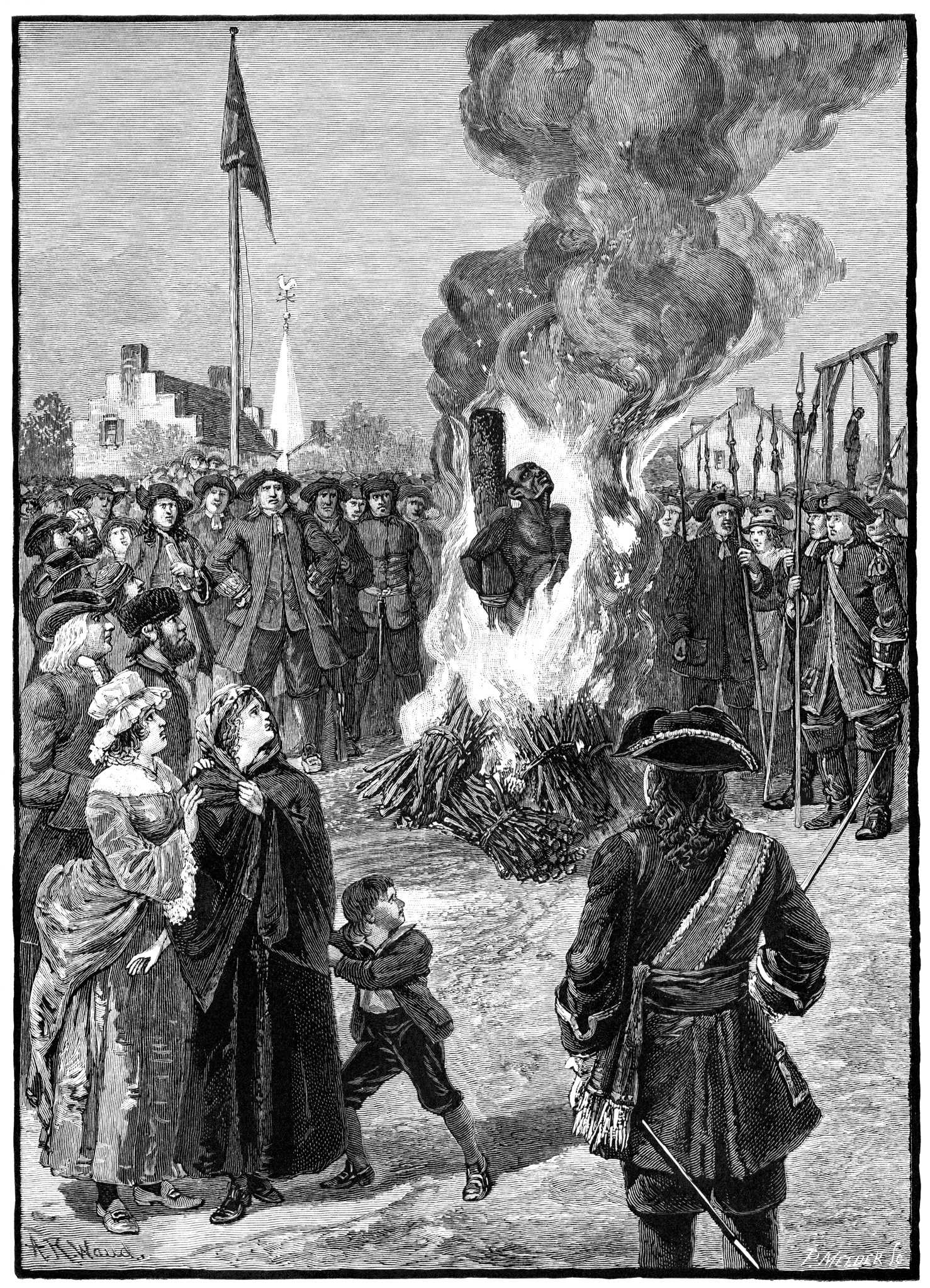Chapter 1
Enslaving Colonial North America
No African experience in the colonies was exactly the same. African people found themselves in different physical and social environments in the Chesapeake, the Lowcountry, Louisiana, and the Northern Colonies. Africans asserted new identities, created their own cultures, and resisted enslavement, while helping to build the physical, cultural, and intellectual foundations of colonial North America. By the end of the colonial period, race-based slavery was the law of the land and the basis of the economy. Africans were enslaved for life.
Malachy Postlethwayt was an economist and advocate of the slave trade. The author of The Universal Dictionary of Trade and Commerce in 1757, Postlethwayt was also employed by the government-sanctioned slave trading enterprise known as the Royal African Company. In 1745 Postlethwayt declared, “Are we not indebted to those valuable people, the Africans, for our Sugars, Tobaccoes, Rice, [and] Rum,” shedding light on the demand for and contributions of enslaved African people in the Western Atlantic World.
Becoming Black in the Chesapeake
As early as the late 1630s, English colonists began to distinguish between the status of white servants and enslaved Africans. In 1639, Maryland became the first colony to state that baptism as a Christian did not make an enslaved person free. Over time, more stringent laws were also put into place, including some that regulated interracial relationships. Though English law dictated that the status of a child followed the status of the father, Virginia colonial law dictated that the status of a child born to an enslaved mother followed the status of the mother — thus codifying chattel slavery and giving birth to generations of enslaved Black people. This period marks the shift from indentured servitude to racial slavery in colonial North America.
The laws increasingly based slavery on African descent and made it hereditary and lifelong. This separated indentured Europeans and enslaved Africans. It created whiteness. And Africans became Black in colonial North America. The race-based system of slavery was cemented into law, fundamental to the growing colonial economy, and would prove instrumental to the founding of the United States.
Enslaved Africans transported to the colonial Chesapeake by 1725 | 42,200 |
Enslaved Africans transported to the colonial Chesapeake by 1775 | 127,200 |
Bacon’s Rebellion, 1676
Wine Bottle from Bacon’s Castle
Grenade recovered from the Third Statehouse of the Virginia Colony
White landowners were terrified to see Black people and poor white people united in any cause. The first stirring of revolutionary sentiment in the colonies occurred in 1676 when Nathaniel Bacon led a rebellion of Black and white colonists against William Berkeley, the governor of Virginia. They demanded that Berkeley open up new lands for settlement, end Native American raids, and criminalize the abuse of servants. Thousands of Virginians rose up and chased Governor Berkeley from Jamestown, torching the settlement. The rebels occupied a large house owned by Berkeley supporter Arthur Allen, which they then called “Bacon’s Castle.” Wine bottles excavated from the site show Allen’s insignia. They also burned the Third Statehouse on Jamestown Island using grenades, both symbolically and literally unseating the colonial government. The short-lived rebellion resulted in the government limiting European indentured servitude. The scales tipped. Europeans, including yeoman farmers and poor white people, gained new rights and Africans lost their freedom.
Becoming Black in the Lowcountry
The Akan, Bambara, Igbo, and others formed a Black majority in the Lowcountry. Forced together, they blended their languages, shared customs and habits, and melded distinct religious values and beliefs. A unique African culture was created in the western Atlantic World that enslavers valued but also feared.
Enslaved Africans transported to the Lowcountry by 1725 | 5,500 |
Enslaved Africans transported to the Lowcountry by 1775 | 117,500 |
Stono Rebellion, 1739
Settlement Map of South Carolina
Lowcountry Drum, ca. 1900
South Carolina’s Stono Rebellion was the largest slave uprising in the British mainland colonies prior to the American Revolution. Nearly 100 enslaved Africans beat drums and carried a banner marked "Liberty" while chanting the same in Kongolese: "Lukango!" Beginning at the Stono River, they headed south toward Spanish Florida, which promised freedom for enslaved African people in the British colonies.
The rebels were stopped near the Edisto River and suffered violent retribution from government officials. Immediately after the rebellion, several African cultural practices were banned in the region. The 1740 South Carolina Slave Code banned Africans access to drums used for religious traditions and distant communication. Additionally, the importation of enslaved people from west Africa into the colony was briefly suspended.
Stono represents cultural adaptation and unity among a diverse group of African-descended people collectively resisting in colonial North America. As enslavers’ worries about controlling their enslaved African people grew, so did the reach of Lowcountry race laws.

Several Negroes joined them, they calling out Liberty, marched on with Coulours displayed, and two Drums beating, pursuing all the white people they met with, and killing Man Woman and Child.
An Account of the Negroe Insurrection in South Carolina, 1739
Becoming Black in Louisiana
In Louisiana, peoples from three continents—Africa, Europe, and North America—lived in close proximity and formed tight bonds, leading to friendship and strife. Over a few decades, three different colonial powers, France, Spain, and the United States, ruled the territory, each with different customs and laws. As power shifted, the meaning of Blackness shifted. Africans and their descendants took advantage of uncertainty to negotiate a measure of freedom.
Enslaved Africans shipped to Louisiana by 1731 | 6,000 |
Enslaved Africans shipped to Louisiana by 1803 | 21,700 |
Natchez Revolt (1729) and Samba Bambara Conspiracy (1731)
Charleville Flintlock Musketoon
Rising up in 1729, the Natchez Indian nation initiated a war against the French. The Natchez promised freedom to all who fought, and enslaved Africans quickly joined the rebellion against their common enemy. Two years later, Samba Bambara ignited another revolt. Four hundred Africans launched a full-scale assault against the French. Both revolts ended in defeat. But those who rebelled faced deadly consequences. Slavery could be maintained only through violence and intimidation, and rebellions symbolized a breakdown in the system. After the Natchez Revolt, most of the Native Americans and Africans who were captured were sold into slavery in the Caribbean. Colonial authorities also publicly tortured and executed rebels to reinforce their domination. After the Samba Bambara Conspiracy, the French executed the revolutionaries on the Place d’Armes in New Orleans, tearing men limb from limb on the breaking wheel and hanging women. Despite broken bodies, the spirit of resistance could not be broken.
Becoming Black in the Northern Colonies
Enslaved and free Africans had to adjust to life in the North as racial lines became increasingly rigid. Laws were passed throughout the colonies that limited their ability to marry, move about, and gather. Despite these restrictions, African people in the urban landscape sustained communities that included both free and enslaved persons. In the rural North, enslaved African people faced stringent surveillance, suspicion, and hostility, but still formed relationships with poor white workers who shared many of their grievances.
Enslaved Africans in New Amsterdam in 1725 | 4,100 |
Enslaved Black people in the North in 1775 | 27,100 |
The New York Conspiracy, 1741
African Conspirators Burned at the Stake
In 1741 enslaved Africans and poor whites joined forces in a rebellion called the New York Conspiracy. They plotted to burn New York City, kill wealthy white men, and elect a new king and governor. The rebels set fires across the city, including one at the governor's mansion. Ultimately, 142 Black people and at least 12 white people were accused of conspiracy. Many of the charges were based on the testimony of a 16-year-old indentured servant, Mary Burton, who testified in exchange for her freedom. To discourage future rebellions, punishments were harsh and swift. Of the 142 Black people accused of being conspirators, 13 were burned at the stake, 18 were hanged, and at least 70 were deported. Four whites were hanged, including a man accused of being a Jesuit priest and Spanish sympathizer. No images survive from the New York Conspiracy, though illustrator A. R. Waud depicted it 140 years later.

We . . . congratulate you on the . . . Discovery . . . [of the] Intended Massacre [and] The severity you have shewn . . . securing the Province from . . . attempts for the future.
The Lords of Trade, 1742
